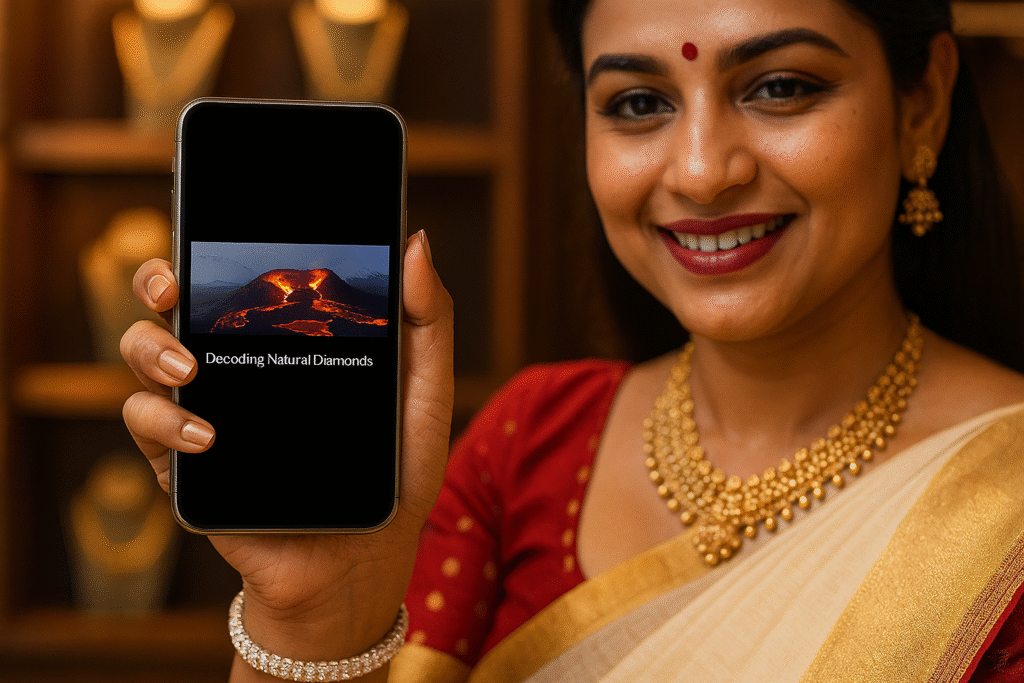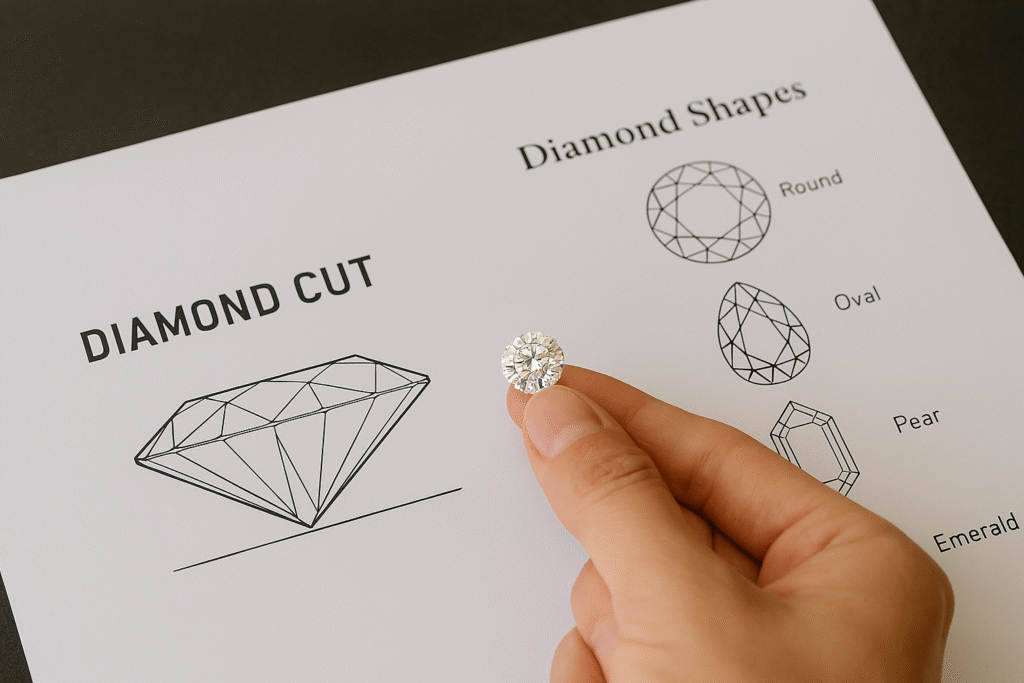Indian Natural Diamond Retailers Alliance and De Beers Partnership
The Indian Natural Diamond Retailers Alliance (INDRA) is helping jewelers across India grow, build trust, and educate consumers about natural diamonds. Partnering with De Beers and supported by the Gem & Jewellery Export Promotion Council (GJEPC), the alliance provides training, marketing support, and certification services to small and independent retailers. With India’s diamond market valued at $10 billion, this collaboration ensures that members of the Indian Natural Diamond Retailers Alliance remain competitive and credible in the growing diamond sector.
Why the Indian Natural Diamond Retailers Alliance Matters
India has long been a hub for diamond cutting and trading, but retail has often been fragmented. The Indian Natural Diamond Retailers Alliance provides:
- Training through the De Beers Institute of Diamonds
- Certification and grading services for natural diamonds
- Marketing campaigns like Forevermark
- Consumer awareness programs highlighting diamond quality and ethical sourcing
This initiative helps independent jewelers compete with large chains like Tanishq while increasing buyer confidence. Research shows over 70% of India’s diamond sales still come from small retailers.
See also: Understanding BIS Hallmark
Benefits for Retailers and Buyers
The Indian Natural Diamond Retailers Alliance ensures collective branding, knowledge sharing, and uniform quality standards. Members gain credibility, while buyers benefit from transparency, verified authenticity, and assurance of ethical sourcing. Awareness campaigns also highlight new diamond-buying occasions, including anniversaries, promotions, and self-purchases.
Read more at:
- De Beers Group
- Gem & Jewellery Export Promotion Council (GJEPC)
- Indian Natural Diamond Retailers Alliance
FAQ For the Indian Natural Diamond Retailers Alliance
Q: What is the Indian Natural Diamond Retailers Alliance?
A: A collaboration between De Beers, GJEPC, and small jewelers to promote natural diamonds and support retailers.
Q: How does it help smaller retailers?
A: By offering training, certification, marketing resources, and consumer awareness campaigns.
Q: Why is trust important in diamond buying?
A: Certified diamonds and informed buyers increase sales and confidence.
Q: Where can I learn more about diamond quality standards?
A: See Mistakes in Gemology for detailed guidance.
This comprehensive global cuisine FAQ covers everything about Asian and Western food and drinks. Whether you’re exploring international cooking techniques or discovering new flavors, this global cuisine FAQ answers the most frequently asked questions about world food traditions, ingredients, and culinary practices from both Eastern and Western cultures.
Global Cuisine FAQ: Asian & Western Food & Drinks
Food reveals cultural contrasts in clear and delicious ways. From cooking methods to dining customs, Asian and Western cuisines showcase unique traditions while also offering fascinating overlaps. Below, you’ll find answers to the most common questions about these culinary worlds.
Understanding Core Differences in Cuisine
1. What distinguishes Asian and Western culinary traditions?
Asian meals often rely on rice or noodles as a foundation. Flavors usually come from soy sauce, ginger, garlic, and a wide variety of spices. Meanwhile, Western gastronomy emphasizes bread, potatoes, and pasta. Dairy plays a key role, with butter, cream, and cheese giving richness to many dishes. Herbs such as rosemary and thyme highlight European cooking. These contrasts create distinct dining habits and flavor profiles.
2. Are Asian dishes always spicy?
No, not at all. While cuisines from Thailand and parts of India feature bold use of chilies, not every dish follows this pattern. Japanese sushi, Chinese dim sum, and Korean bulgogi are mild examples. In fact, Asian cuisines range from fiery to delicate, showcasing a rich palette of flavor.
Western Breakfast Staples and Comfort Foods
1. What constitutes typical Western morning meals?
Western breakfasts often include eggs, bacon, and toast. Pancakes, waffles, and cereal are also popular choices. These hearty starts are usually enjoyed with coffee, tea, or juice, providing both energy and comfort.
2. What represents popular Western comfort foods?
Comfort foods in the West speak to nostalgia and indulgence. Creamy macaroni and cheese, pizza, and hearty casseroles are favorites. Similarly, burgers and fried chicken have wide appeal. Because they are warm, filling, and familiar, these dishes strongly connect to emotion.
Cultural Dining Practices
1. Do all Asian cultures employ chopsticks?
No. Chopsticks dominate in East Asia—China, Japan, and Korea. However, Southeast Asia prefers spoons and forks, while India and parts of the Middle East often use flatbreads or hands. This diversity highlights how food customs closely reflect culture.
2. Why are some Asian foods fermented?
Fermentation preserves food while also enhancing nutrition and flavor. Korean kimchi, Japanese miso, and Indonesian tempeh show how tradition meets health benefits. These foods are valued not only for taste but also for their role in well-being.
Common Western Beverages
1. What beverages are common with Western meals?
Western dining often features water, soda, or fresh juice. Alcohol also has a strong cultural connection, with wine served at European dinners and beer central in North America. In the southern United States, sweet iced tea is a staple.
Dietary Flexibility and Options
1. Can one discover plant-based options easily?
Yes. Asian cuisines offer tofu stir-fries, lentil dals, and vegetable curries that are naturally vegetarian. Western food, similarly, embraces plant-based eating. Salads, vegetarian pastas, and vegan burgers have grown popular, making meat-free dining accessible worldwide.
Unique Asian Drinks to Explore
1. What are some unique Asian beverages?
Asia provides a wide variety of distinctive drinks. Bubble tea, from Taiwan, combines tea with chewy tapioca pearls. Japanese sake, made from rice, holds deep cultural meaning. Strong Vietnamese iced coffee, sweetened with condensed milk, adds a bold twist compared to Western brews.
Portion Sizes and Dining Habits
1. How do portion sizes compare?
Western meals often emphasize large servings, reflecting abundance. By contrast, Asian meals are usually smaller yet balanced, encouraging sharing and mindful eating. This creates different social experiences around the table.
The Art of Fusion Cuisine
1. Is it feasible to integrate Asian and Western flavors?
Absolutely. Fusion cuisine blends traditions in creative ways. For instance, teriyaki burgers combine Japanese flavors with American fast food, while kimchi tacos bring Korean spice to Mexican street food. These playful mixes show how food bridges cultures.



